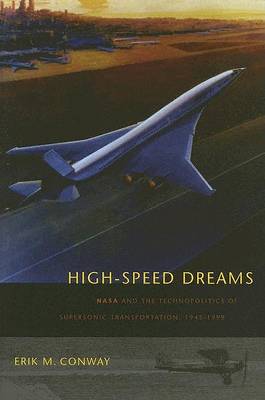New Series in NASA History
3 total works
Although the Jet Propulsion Laboratory in Pasadena, California, has become synonymous with the United States' planetary exploration during the past half century, its most recent focus has been on Mars. Beginning in the 1990s and continuing through the Mars Phoenix mission of 2007, JPL led the way in engineering an impressive, rapidly evolving succession of Mars orbiters and landers, including roving robotic vehicles whose successful deployment onto the Martian surface posed some of the most complicated technical problems in space flight history. In Exploration and Engineering, Erik M. Conway reveals how JPL engineers' creative technological feats led to major breakthroughs in Mars exploration. He takes readers into the heart of the lab's problem-solving approach and management structure, where talented scientists grappled with technical challenges while also coping, not always successfully, with funding shortfalls, unrealistic schedules, and managerial turmoil.
Conway, JPL's historian, offers an insider's perspective into the changing goals of Mars exploration, the ways in which sophisticated computer simulations drove the design process, and the remarkable evolution of landing technologies over a thirty-year period.
Conway, JPL's historian, offers an insider's perspective into the changing goals of Mars exploration, the ways in which sophisticated computer simulations drove the design process, and the remarkable evolution of landing technologies over a thirty-year period.
This book offers an informed and revealing account of NASA's involvement in the scientific understanding of the Earth's atmosphere. Since the nineteenth century, scientists have attempted to understand the complex processes of the Earth's atmosphere and the weather created within it. This effort has evolved with the development of new technologies-from the first instrument-equipped weather balloons to multibillion-dollar meteorological satellite and planetary science programs. Erik M. Conway chronicles the history of atmospheric science at NASA, tracing the story from its beginnings in 1958, the International Geophysical Year, through to the present, focusing on NASA's programs and research in meteorology, stratospheric ozone depletion, and planetary climates and global warming. But the story is not only a scientific one. NASA's researchers operated within an often politically contentious environment. Although environmental issues garnered strong public and political support in the 1970s, the following decades saw increased opposition to environmentalism as a threat to free market capitalism.
Atmospheric Science at NASA critically examines this politically controversial science, dissecting the often convoluted roles, motives, and relationships of the various institutional actors involved-among them NASA, congressional appropriation committees, government weather and climate bureaus, and the military.
Atmospheric Science at NASA critically examines this politically controversial science, dissecting the often convoluted roles, motives, and relationships of the various institutional actors involved-among them NASA, congressional appropriation committees, government weather and climate bureaus, and the military.
In High-Speed Dreams, Erik M. Conway constructs an insightful history that focuses primarily on the political and commercial factors responsible for the rise and fall of American supersonic transport research programs. Conway charts commercial supersonic research efforts through the changing relationships between international and domestic politicians, military/NASA contractors, private investors, and environmentalists. He documents post-World War II efforts at the National Advisory Committee on Aeronautics and the Defense Department to generate supersonic flight technologies, the attempts to commercialize these technologies by Britain and the United States during the 1950s and 1960s, environmental campaigns against SST technology in the 1970s, and subsequent attempts to revitalize supersonic technology at the end of the century. High-Speed Dreams is a sophisticated study of politics, economics, nationalism, and the global pursuit of progress. Historians, along with participants in current aerospace research programs, will gain valuable perspective on the interaction of politics and technology.

